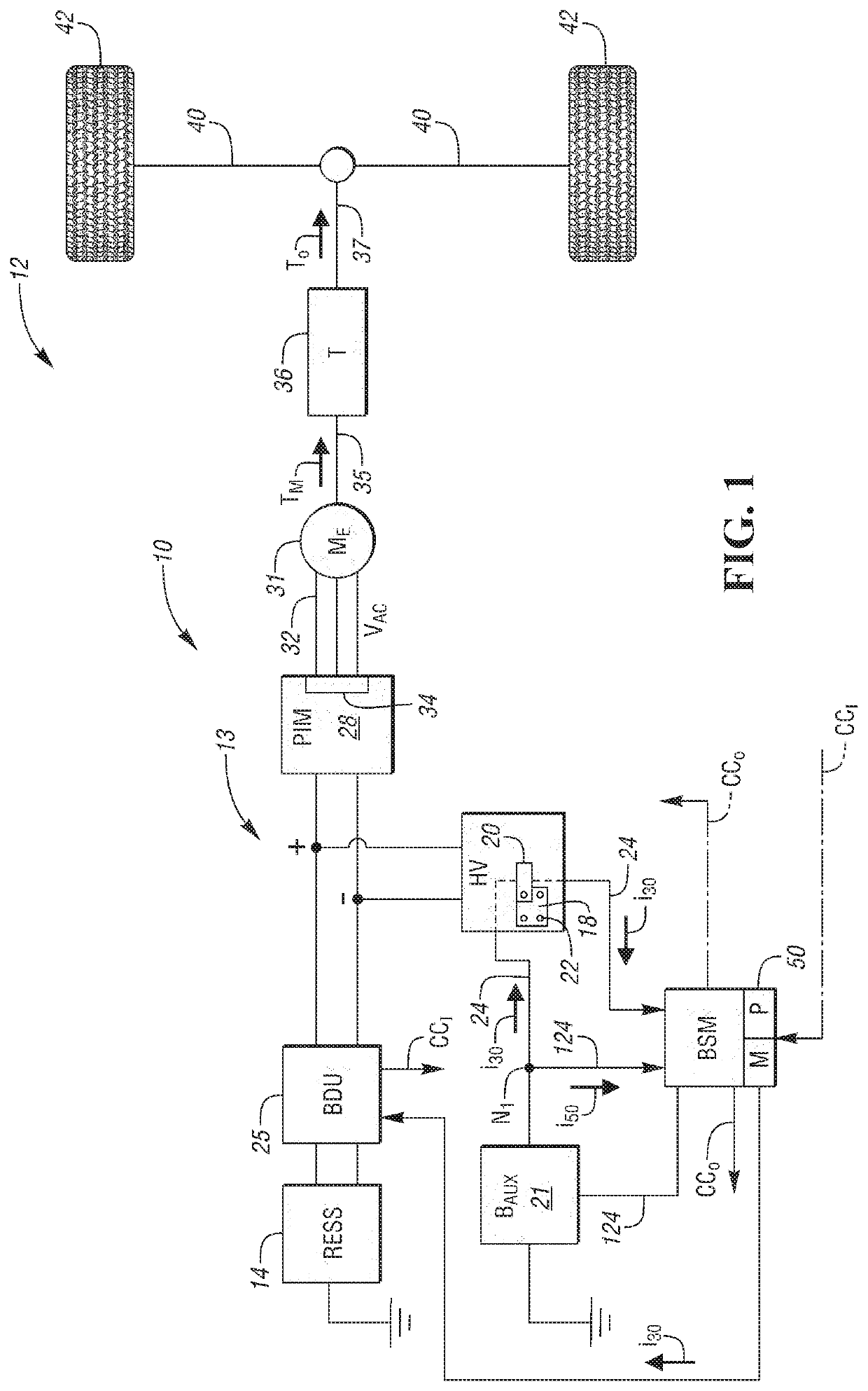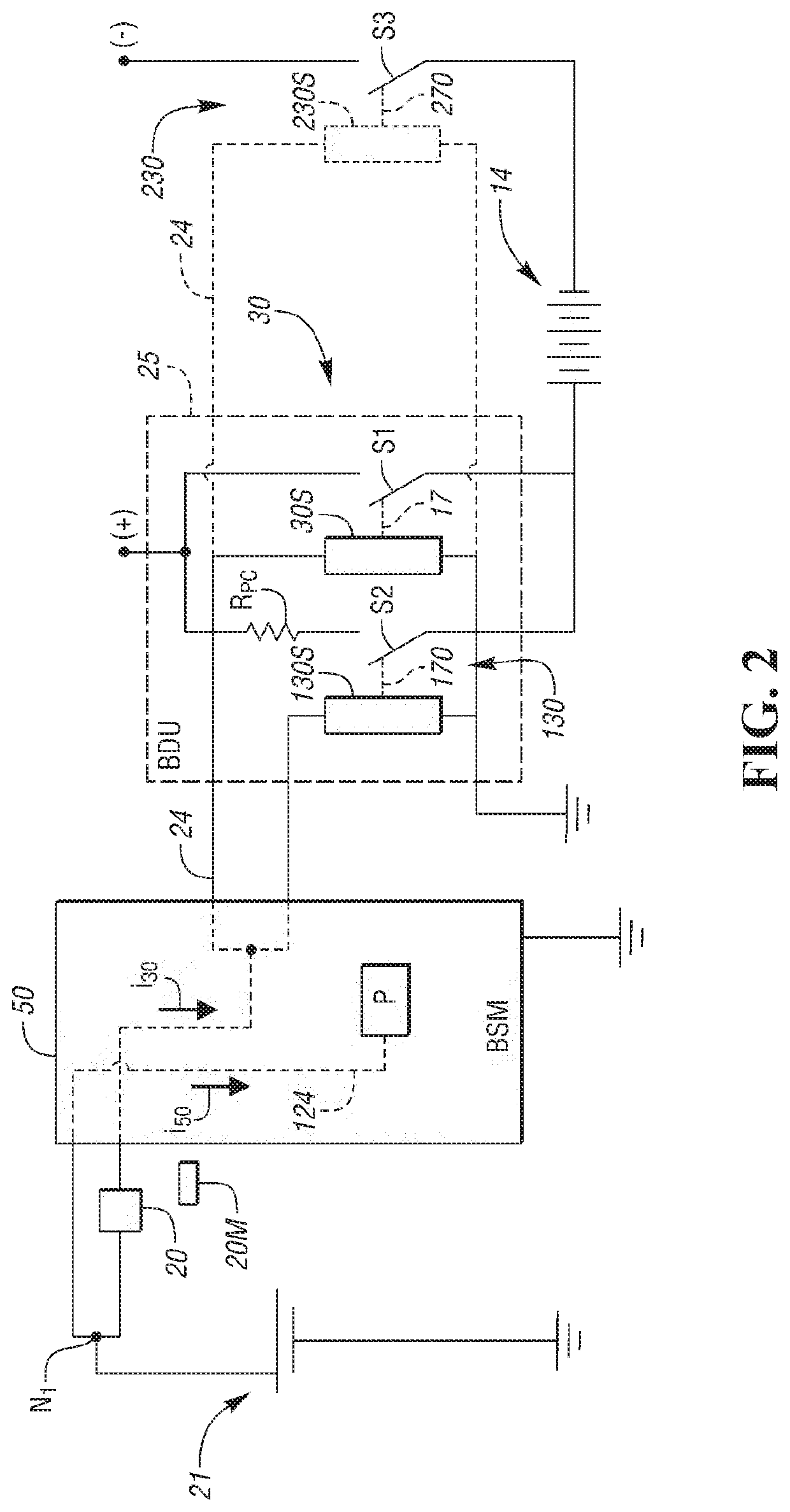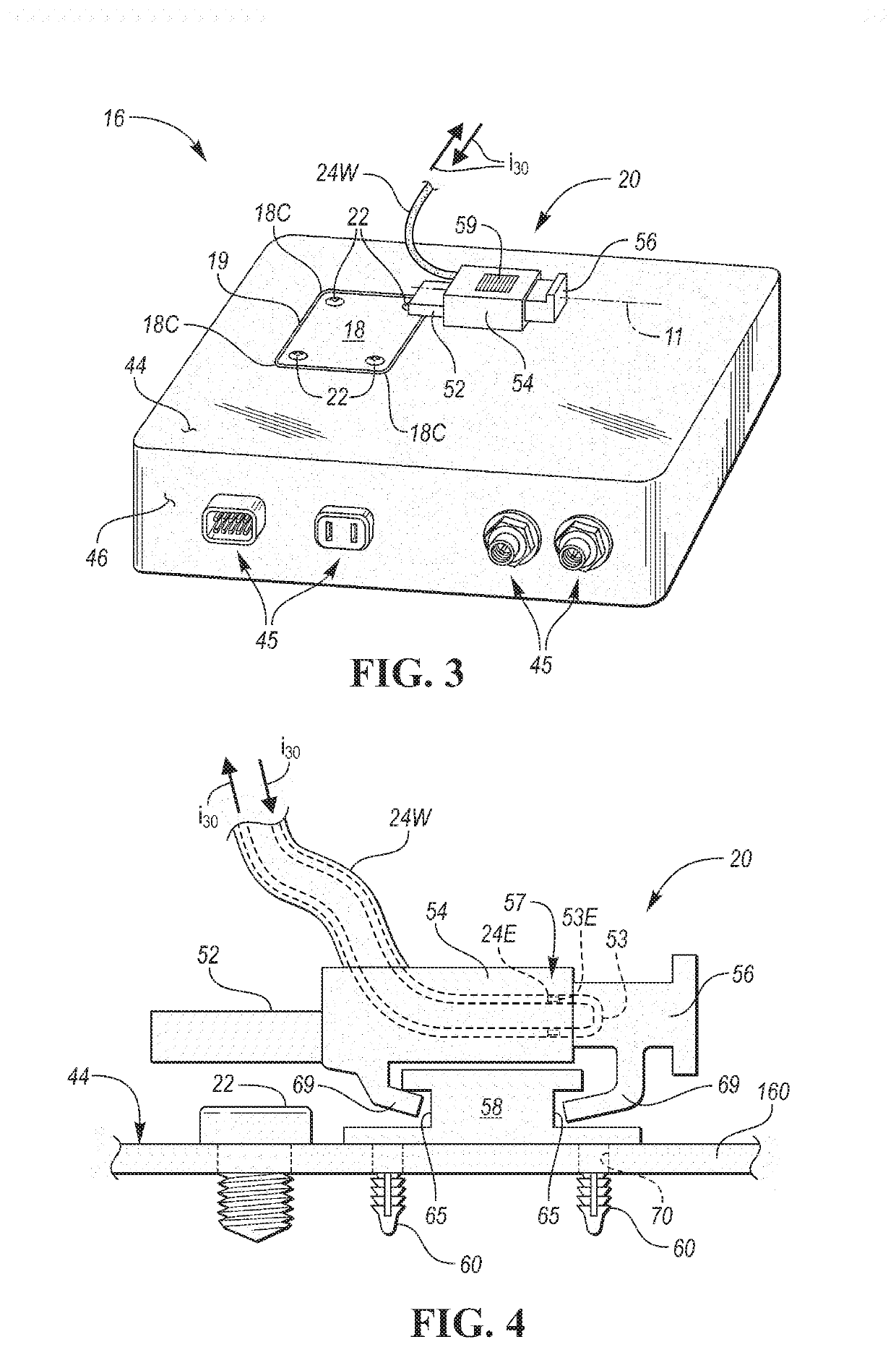Connector-based high-voltage lockout function
a high-voltage lockout and connector technology, applied in the direction of secondary cell servicing/maintenance, coupling device connection, safety/protection circuit, etc., can solve the problems of high-voltage bus de-energized and disconnectress, and achieve simplified and robust connector-based, reduce high-voltage power exposure, and reduce dependence
- Summary
- Abstract
- Description
- Claims
- Application Information
AI Technical Summary
Benefits of technology
Problems solved by technology
Method used
Image
Examples
Embodiment Construction
[0025]Referring to the drawings, wherein like reference numbers refer to like components, an electrical system 10 is shown in FIG. 1. The electrical system 10, which may be used as part of an example vehicle 12 as described herein or as part of a power plant or other mobile or stationary device or system, provides a high-voltage system lockout (HVSL) function that may forego use of a manual service disconnect (MSD) and / or high-voltage interlock (HVIL) process as described above.
[0026]The electrical system 10 includes multiple voltage buses, including a high-voltage (HV) bus 13 that is connected to a rechargeable energy storage system (RESS) 14. The term “high-voltage” as used herein refers to voltage levels in excess of 12-15 volt low-voltage / auxiliary voltage levels, e.g., 60-300 volts or higher. Also as used herein, the term “RESS” refers to a multi-cell rechargeable battery pack having a lithium ion, nickel metal hydride, or other application-suitable battery chemistry, as well a...
PUM
 Login to View More
Login to View More Abstract
Description
Claims
Application Information
 Login to View More
Login to View More - R&D
- Intellectual Property
- Life Sciences
- Materials
- Tech Scout
- Unparalleled Data Quality
- Higher Quality Content
- 60% Fewer Hallucinations
Browse by: Latest US Patents, China's latest patents, Technical Efficacy Thesaurus, Application Domain, Technology Topic, Popular Technical Reports.
© 2025 PatSnap. All rights reserved.Legal|Privacy policy|Modern Slavery Act Transparency Statement|Sitemap|About US| Contact US: help@patsnap.com



